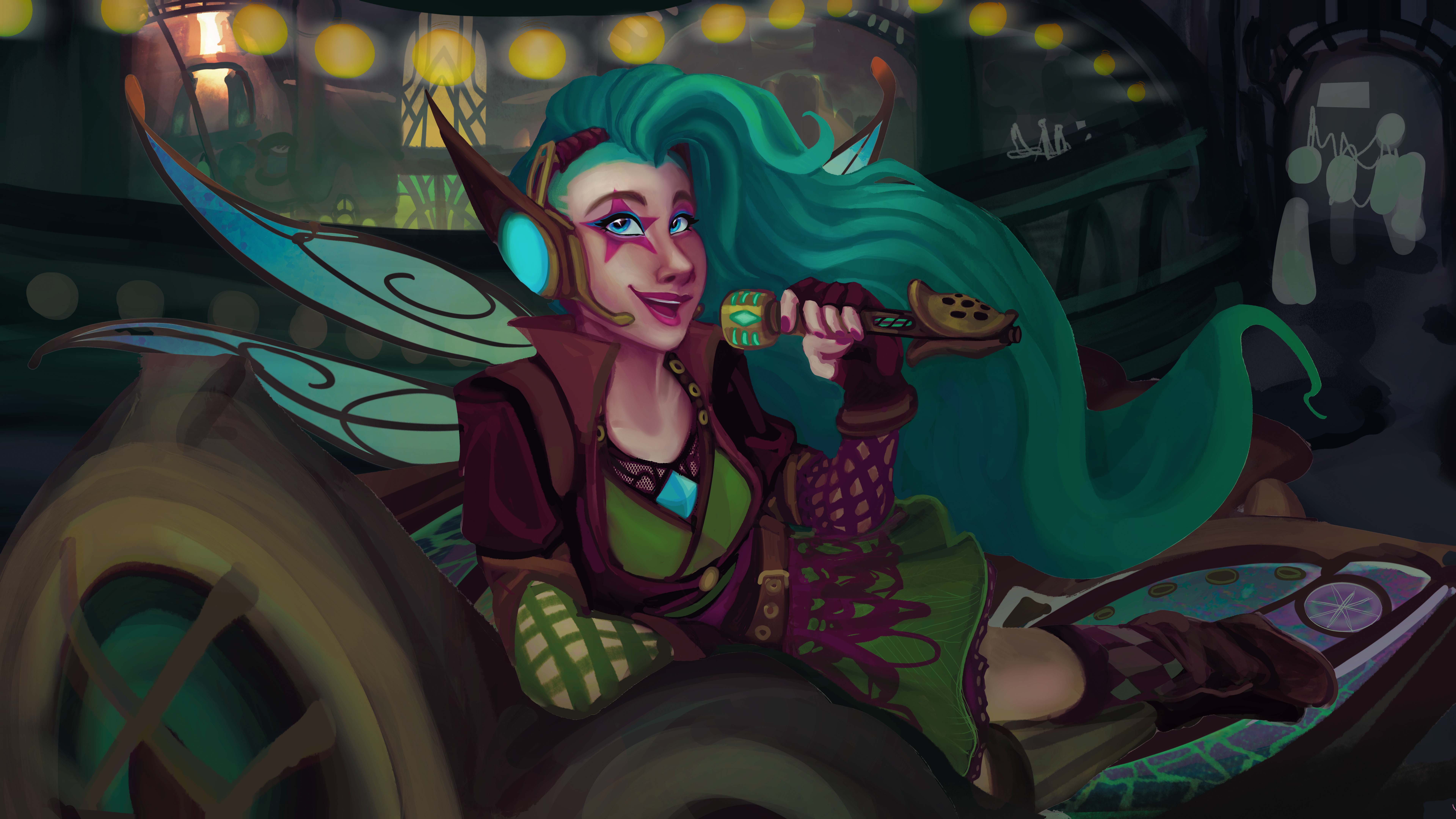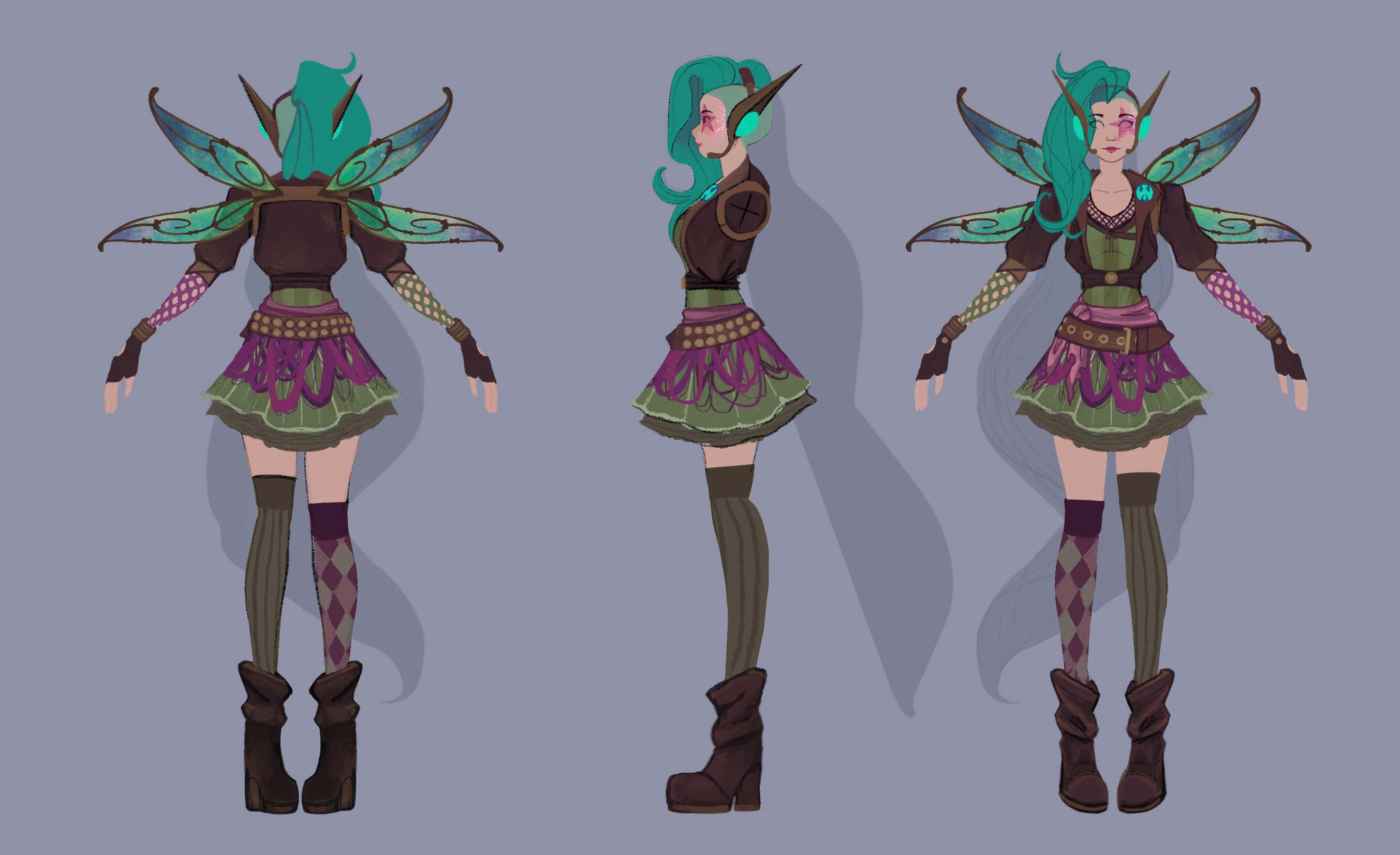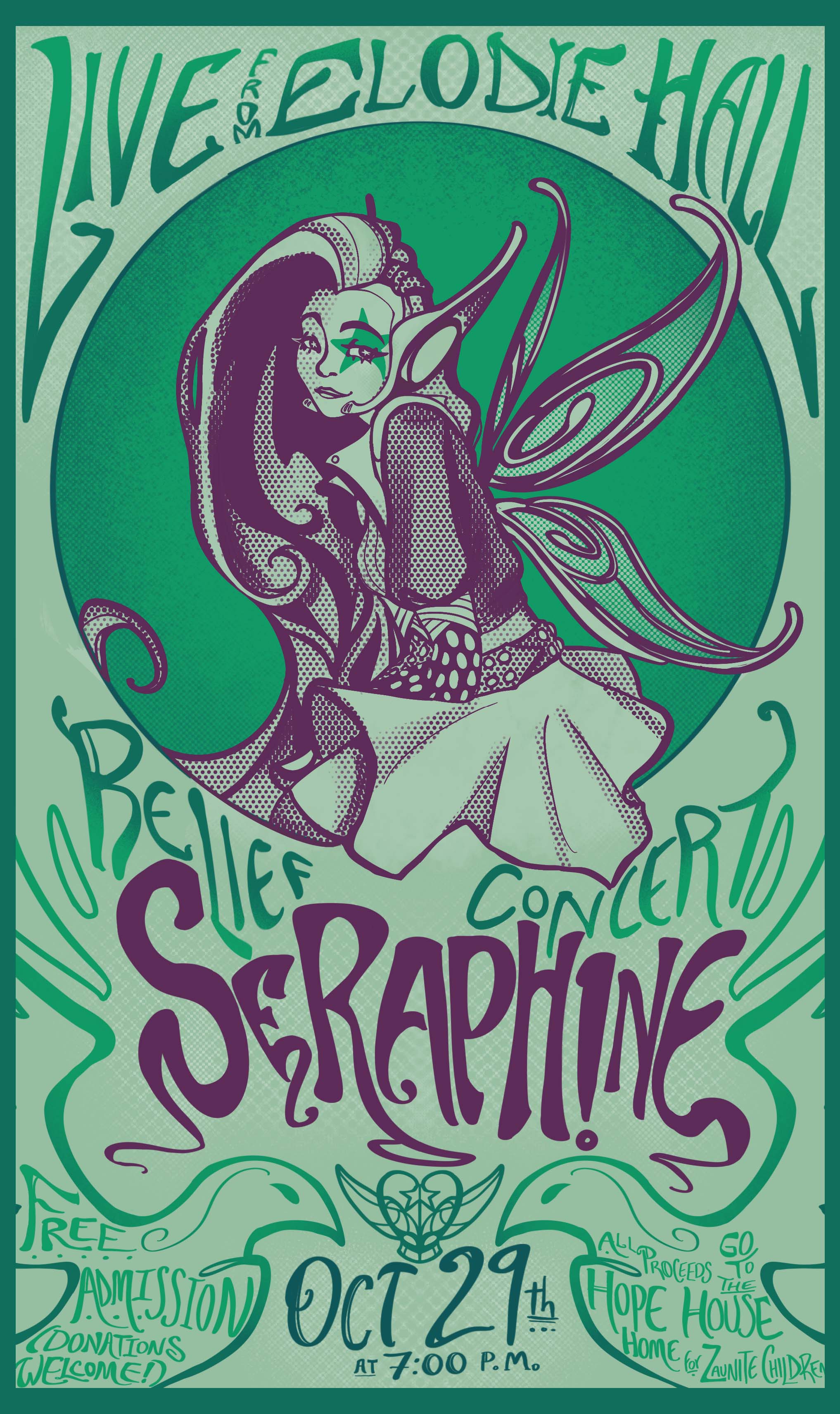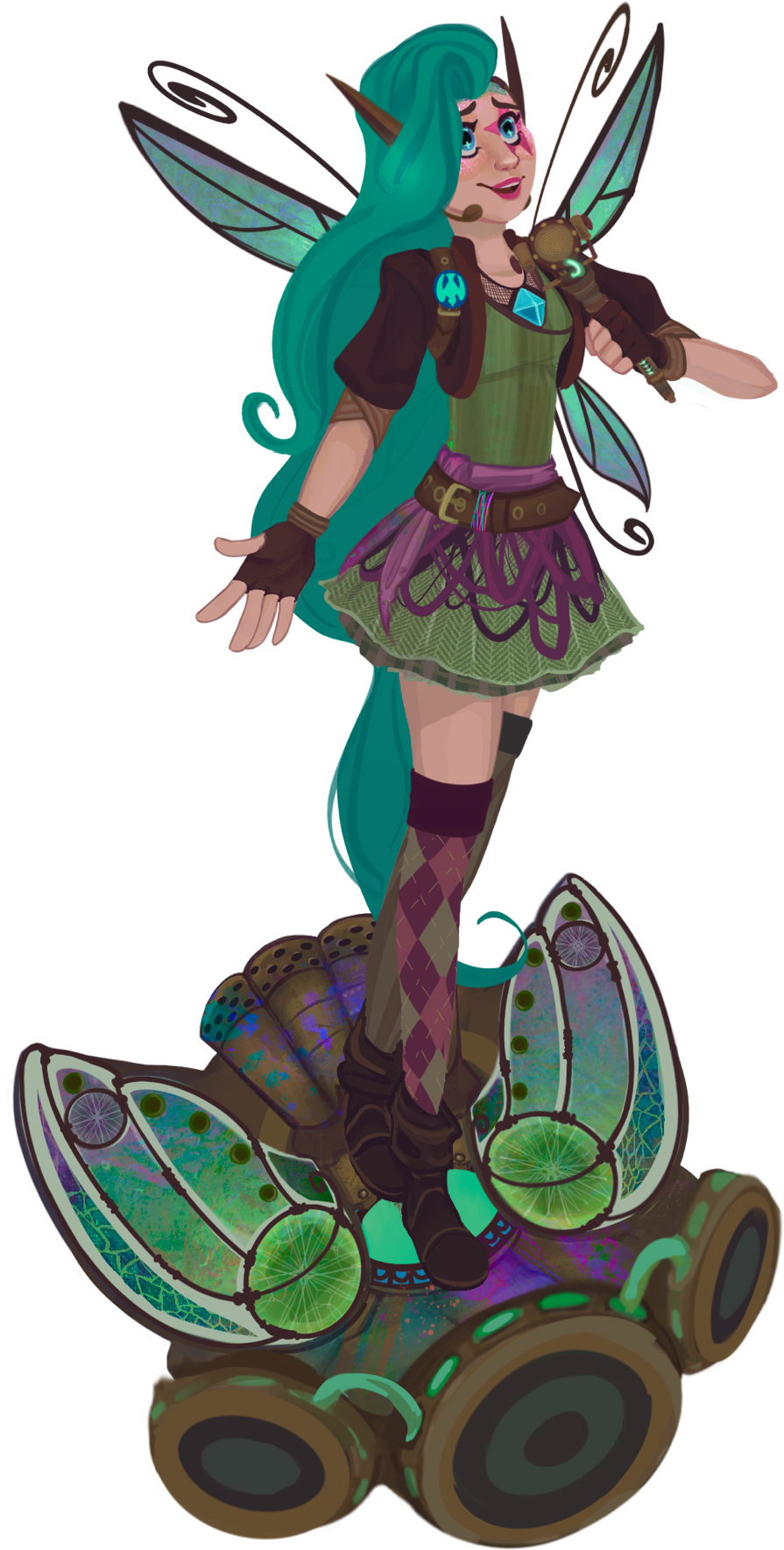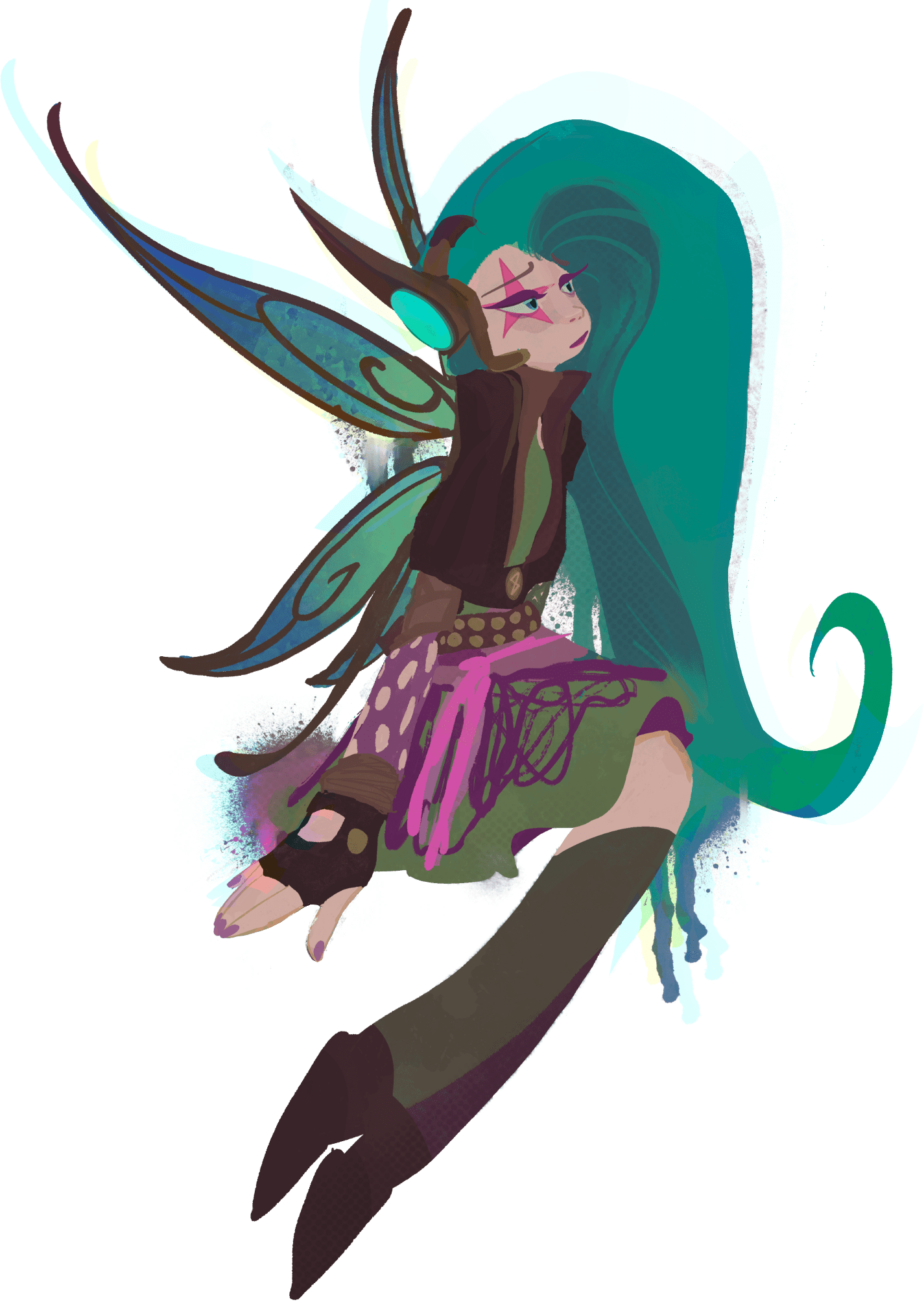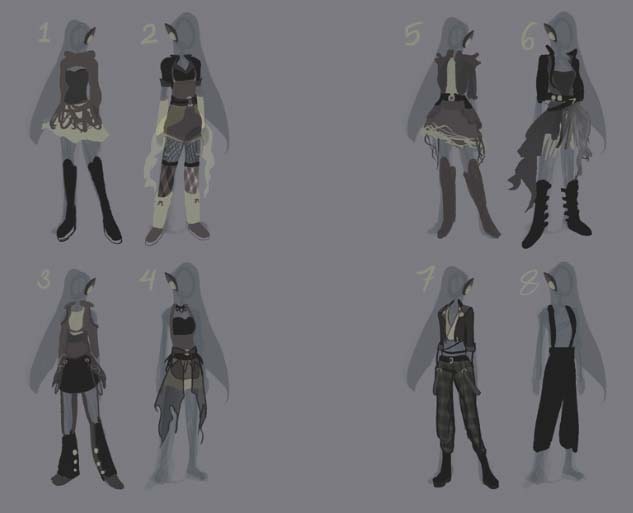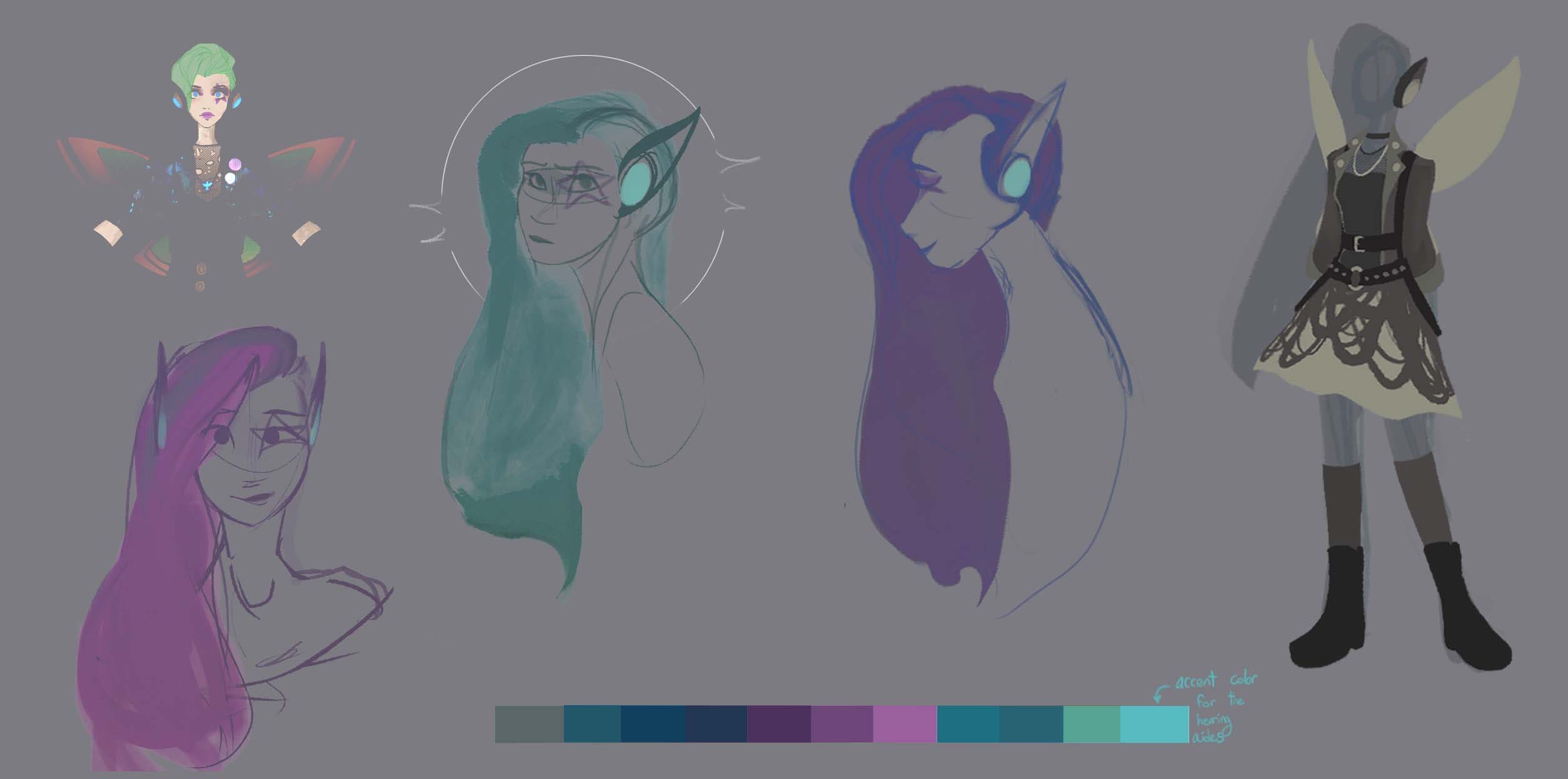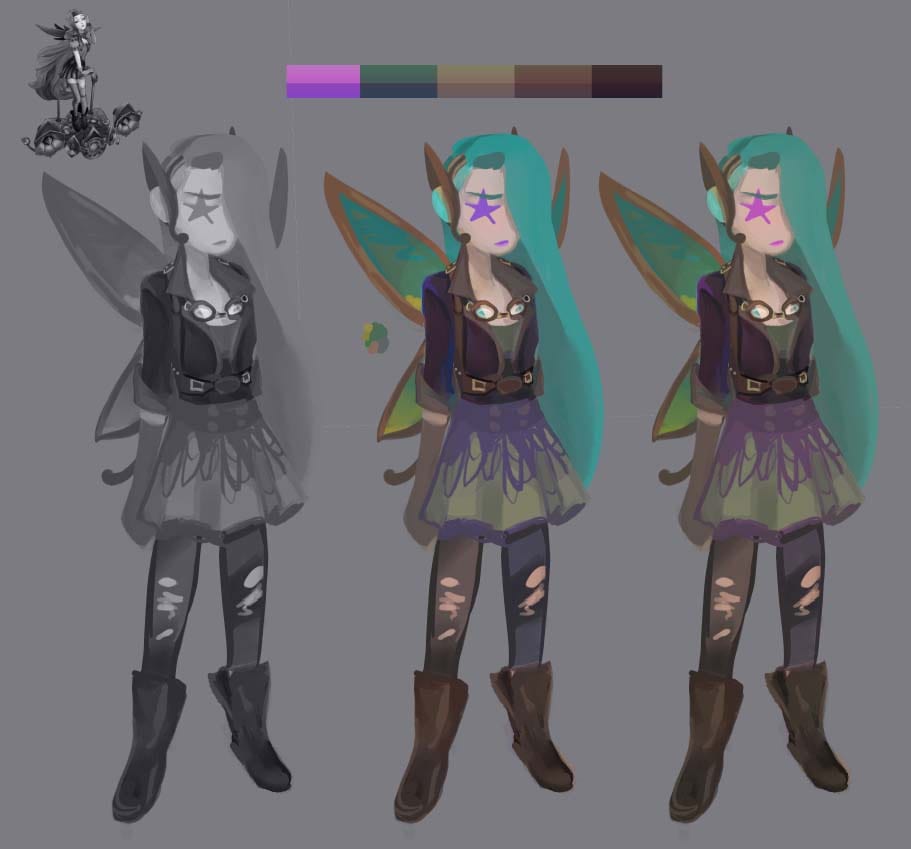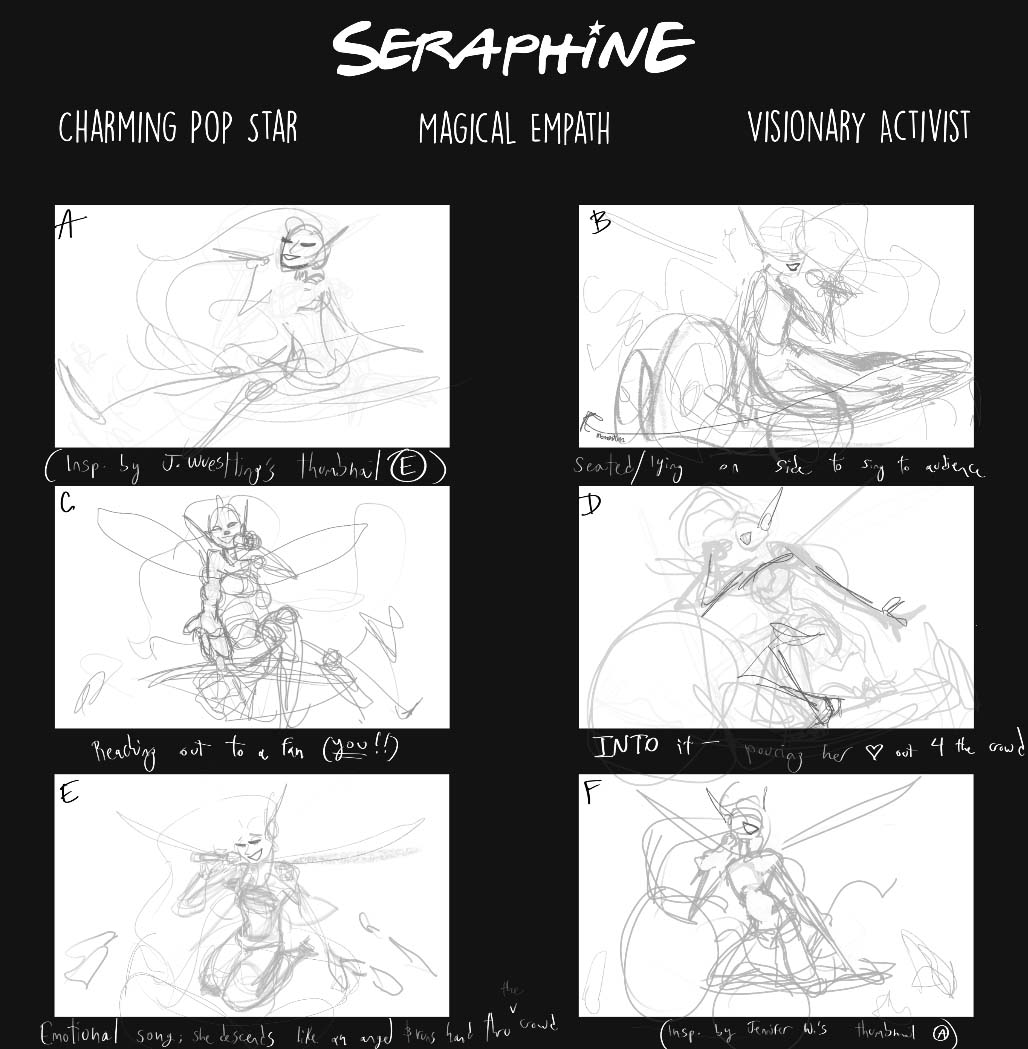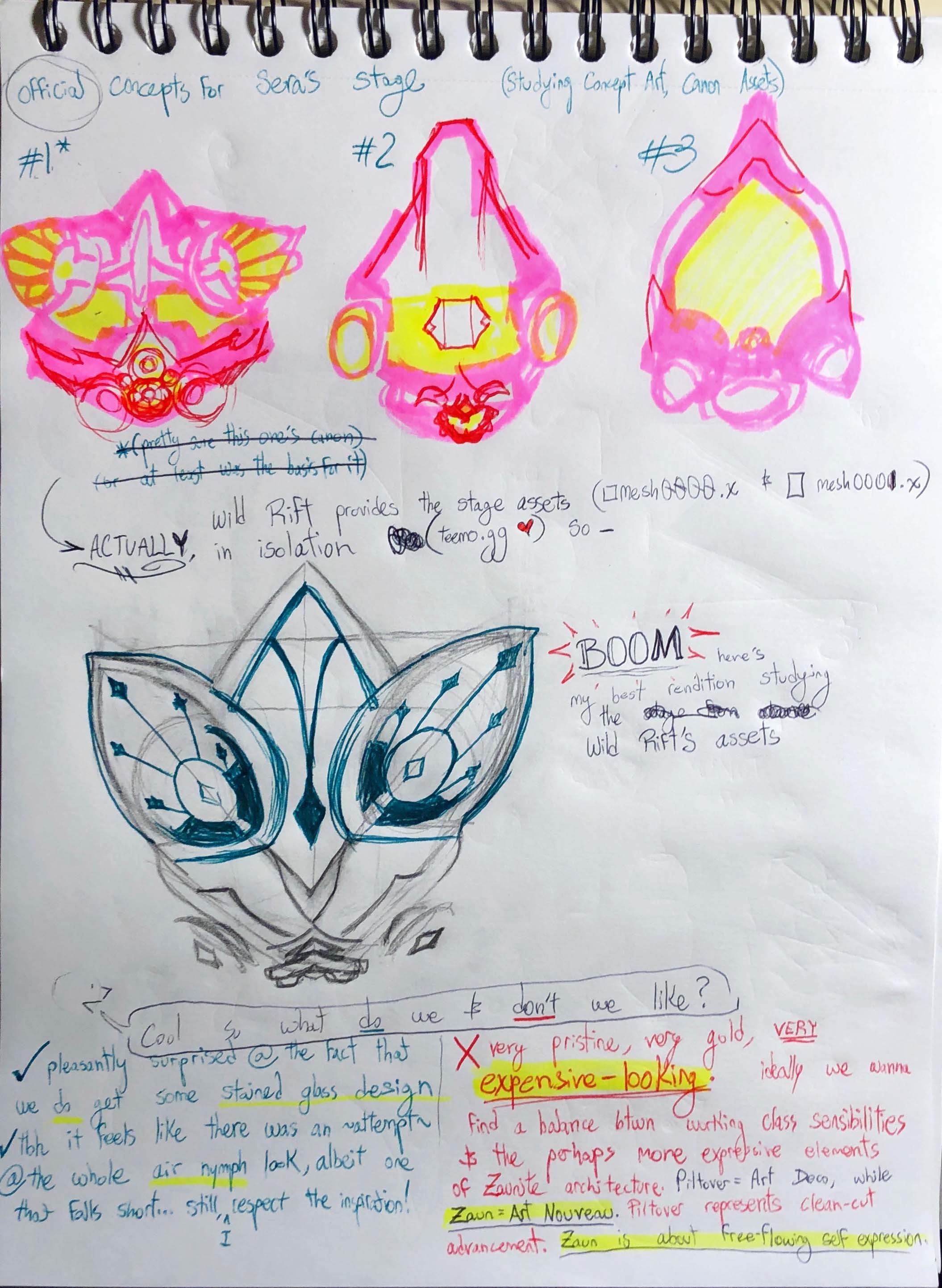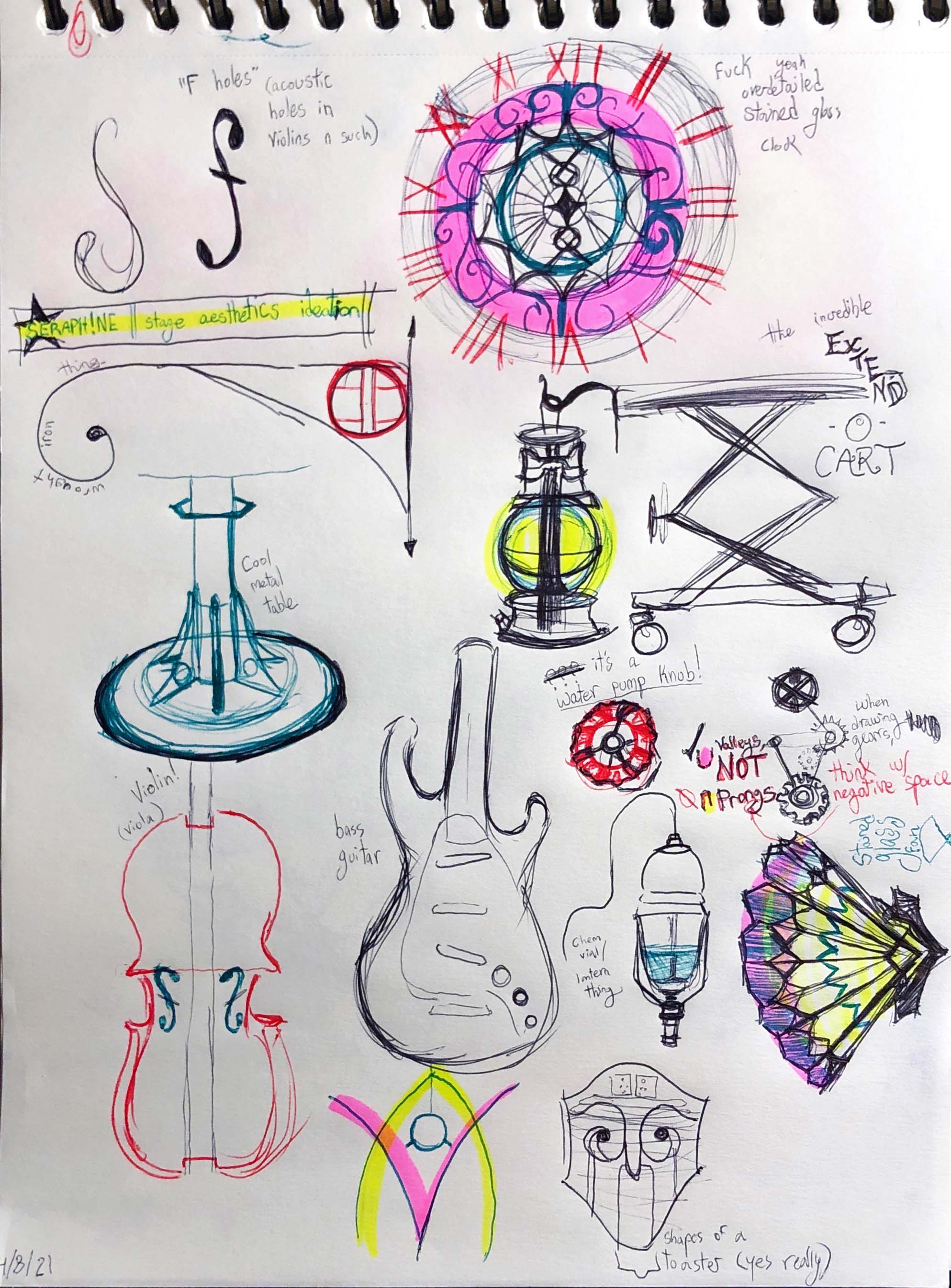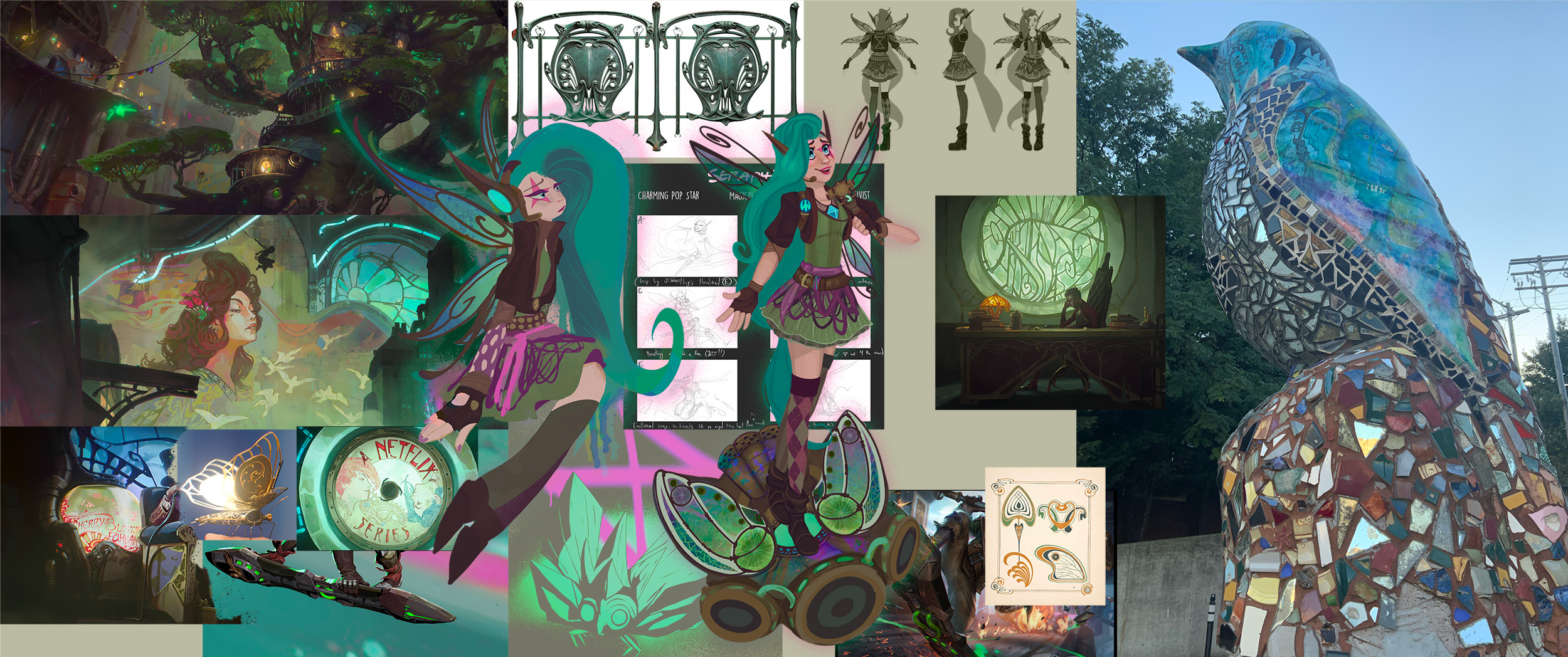
Art + Design
The SERAPH!NE Project
Context
Revealed in October of 2020, the League of Legends champion Seraphine actually checks a lot of boxes for me in terms of appealing character elements. She's a singer (like me!) and a magical empath à la Mantis from Guardians of the Galaxy; a mage who is able to listen to the souls of others, and then create music that acts as a vehicle for delivering those emotions to people who otherwise would not have felt them. It's a magical power that, in the world Seraphine was created to inhabit, should have a massive impact. Piltover and Zaun the are twin districts of an ultra-capitalist city, where those with wealth and power live in a towering pristine paradise (Piltover), and those at the bottom must endure the pollution and waste created by the pursuits of the elite (Zaun). A pop star with a power like Seraphine's, who is able to transcend the district divide and become famous in both places, should threaten to overthrow the entire status quo of Piltover and Zaun if she's able to get the everyday populace of Piltover to consider the plight of the Zaunites... Right?
I and many other fans of the League of Legends universe seem to think so, but in practice, the character is unfortunately a lot less realized. Grievances against the character included (but were not limited to): the fact that her character design felt wildly out of place for the setting she was supposed to exist in; the fact that she had zero established character connections to any other existing champion in the game; the fact that the writers seemed wholly uninterested with portraying Seraphine as a credible threat to the status quo of Piltover & Zaun; and finally, the fact that on release, she was not advertised as her own independent character, but as a vessel through which Riot Games could sell their latest $20 skin, which imagined the character as a real-world k-pop idol. (Unlike most champions, canon-universe Seraphine had very little distinguishing characteristics that set her apart from her alternate universe k-pop counterpart, which left an impression that the skin-line version of the character was made first, with the canonical version of the character tacked on at the very end in order to justify her existence in the League of Legends universe.)
All this to say: practically no one was happy with her on release, myself included. That disappointment was the impetus for this fanatical passion project of mine. I challenged myself not only to re-imagine the character's narrative potential, but also to re-imagine her character design and ultimately create splash art for her to the tune of other League of Legends champions.
